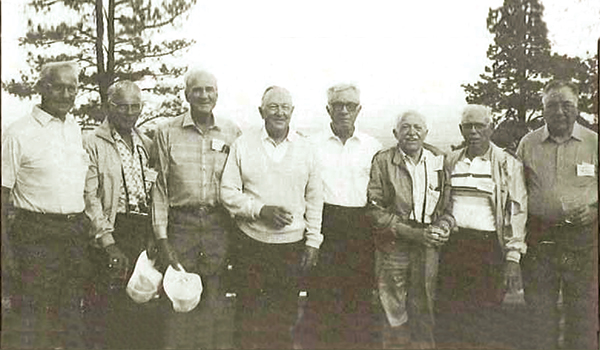
75 Years of Army Aviation / By Mark Albertson: December 8, 1941. In the wake of the Pearl Harbor disaster, the American Republic steeled itself towards war. About a week after the Day of Infamy, MAJ William Wallace Ford was on his way to the Nation’s capital to begin planning for the Air Observation Post concept. He was joined by MAJ Gordon J. Wolf, an attorney in corporate law who at one time represented the interests of the Aeronca Aircraft Corporation; MAJ Rex Chandler, a radio-communications expert, whose talents with same would prove a boon to Army Aviation (a ground officer who believed in the Air OP concept); and COL Rex Beasley out of the Office of the Chief of the Field Artillery, who rounded out the planning group.
After New Year’s Day, MAJ Ford became LT COL Ford and reported to Fort Sill, Oklahoma where he was named Director of Air Training by the commandant of the Field Artillery School. As such, he ran the Air Training Detachment. Added to Ford’s team was LT Robert R. Williams, appointed to run operations and logistics; CPT Robert M. Leich became engineering officer; and LT Delbert L. Bristol became adjutant.
Army Aviation Gets Its First Home

(Left to right) LTC Charles W. Lefever, Agoura Hills, CA; COL Robert F. Cassidy, Sunland, CA; LTC Bryce Wilson, Genoa, NV; LTG Robert R. Williams, Ft. Worth, TX; LTC James F. Hill, Ft. Worth, TX; LTC Henry S. Wann, Williamsburg, VA; COL William R. Mathews, San Antonio, TX; LTC John S. Sarko, West Bend, WI, members of the Class Before One and one of their instructors, in Nevada mid-September 1992 at their 50th Anniversary reunion. / AAPI ARCHIVE PHOTO
The Chief of the Army Air Corps had turned over Post Field, Fort Sill, for use in the project; and, supplied over 24 Piper Cub airplanes (commercial J-3s painted in olive drab) and associated equipment. Ford rented Swain Field, a commercial site, to accept any overflow necessary. Swain Field eventually became the Air Training Detachment’s training field.
The Office of the Chief of the Field Artillery forwarded circulars to the Army’s Field Artillery units, inviting applications for participation in the test from officers and enlisted men having civilian pilot licenses with private pilot or high grade. Fourteen officers and 19 enlisted were thus selected and reported to Fort Sill for training.
LTC Ford huddled with his civilian instructors to draw up a curriculum for training. The Chief Flight Instructor was Richard Alley with Stanford J. Stelle as Maintenance Supervisor, both from the Civil Aeronautics Administration (CAA). Seven other flight instructors were attached to Ford’s command as well. The Maintenance Section saw Forrest I. Nearing from Piper Aircraft and Chester Hammond from Continental.
At 0730 hours, January 15, 1942, training commenced for the first class of artillery spotters. This initial training group became known as the Class Before One.
The Curriculum
The training was rigorous. LT Williams, Dick Alley, Tony Piper, Henry Wann and Ted Shirmacher set up the flight curriculum and directed short field precision and low acrobatic instruction. This would be the training program used by the air training department for the next three years.
Training for artillery spotting saw the use of pilot/observer teams. Usually the observer was another pilot. But in combat, the observer would be a junior officer from the unit the aircraft was operating with; an officer who was already trained in Field Artillery operations. Following a briefing, a pilot/observer team would lift off and head for the target area. Once the target was sighted, gunners were ordered to commence firing. The pilot/observer team then rendered their coordinates to home in the battery fire. Once this was done, the observer team returned to their field. The average time between takeoff and landing per training mission was nine minutes. As proficiency grew, some teams got this down to six minutes.
Training concluded by February 28, 1942. Of fourteen officers and 19 enlisted who started, 11 officers and 9 enlisted remained. LT COL Ford observed, “Probably there would have been fewer failures had the course not been so condensed.” Regardless, Ford’s squadron was slated to participate in Army exercises, commencing March 1, 1942.
The Air Op concept was no longer an idea, but ready to be proven in actual maneuvers. Army Aviation, it seemed, was on its way.
Mark Albertson is the award winning historian for Army Aviation Publications, Inc.










